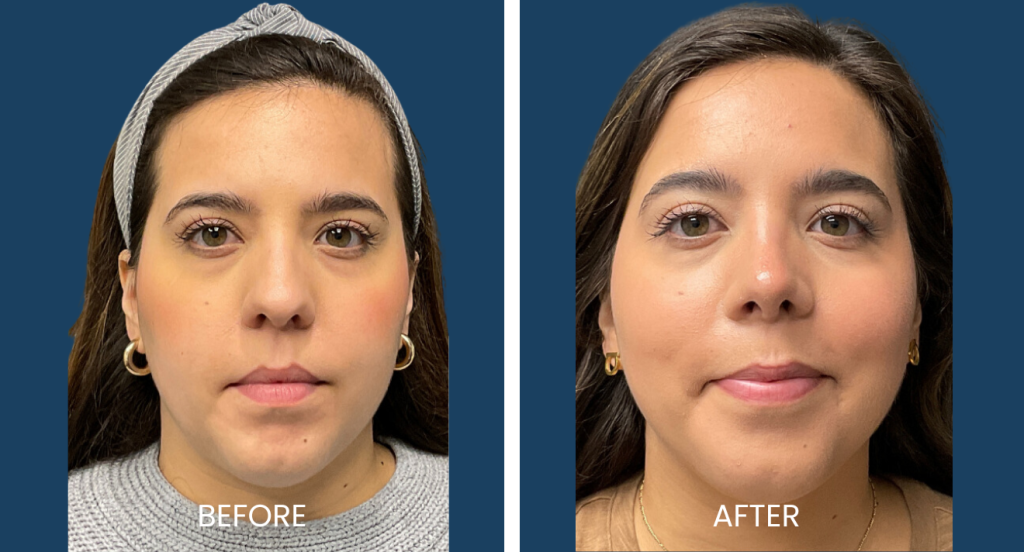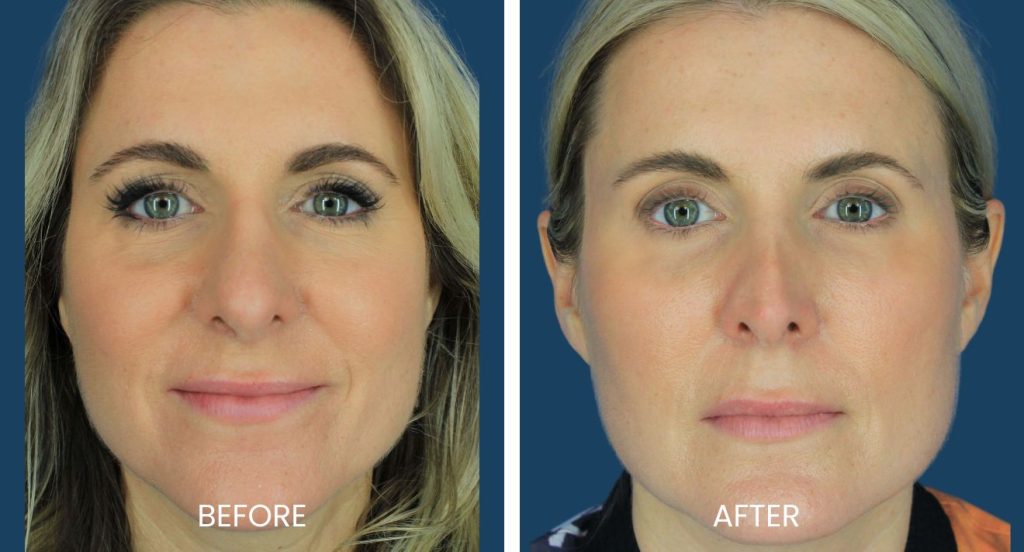A detailed guide to rhinoplasty recovery, including timelines, FAQs, and managing the emotional aspect of recovery.
A nose job, or rhinoplasty, can work wonders. It can change the shape and size of your nose to make them look perfect. If you’re having trouble breathing because of your nose, it can help with that too. But it’s important to know what to expect during recovery. You will not only be dealing with the physical recovery but also the emotional ups and downs of the healing process. We’re here to equip you with what you need to know before getting a nose job.
Rhinoplasty Recovery Timeline
This is only a general overview of what you can expect after your surgery. The healing timeline for rhinoplasty can vary from person to person, but generally, it takes several weeks to months to fully recover.
Immediate Post-Op
Following the procedure, you might experience discomfort, swelling, and bruising around your nose and eye area. Your surgeon may apply bandages or a splint to provide support for your newly reshaped nose and shield it during the initial healing phase. Remember to rest and avoid strenuous activities to aid in the healing process.
Week 1
During the initial week post-surgery, swelling and bruising may persist, which are normal parts of the healing process. It’s important to diligently follow your surgeon’s post-operative care instructions.
These may include keeping your head elevated while resting, applying cold compresses to reduce swelling, and taking prescribed medications for pain management and swelling. Avoid blowing your nose and refrain from activities that could put pressure on it.
Week 2
As the second week progresses, you’ll likely notice a gradual improvement in swelling and bruising. While some residual swelling may remain, you may start feeling more comfortable and less reliant on pain medications.
Be religious in attending any follow-up appointments scheduled with your surgeon to monitor your progress and ensure proper healing. You can gradually resume gentle activities such as light walking, but avoid strenuous exercises.
Month 1
By the end of the first month, the swelling and bruising will significantly improve. However, remember that your nose’s final shape and appearance may still be evolving during this period.
Continue to adhere to your surgeon’s recommendations, which may include avoiding direct sunlight, wearing sunscreen, and refraining from activities that could risk injury to your nose. Maintain healthy habits such as eating a balanced diet and staying hydrated to support your body’s healing process.
Months 2-3
During the second and third months of recovery, further reduction in swelling is expected, and your nose will begin to settle into its final shape. While most visible swelling resolves during this period, subtle changes may persist over the coming months.
Stay patient and continue practicing good self-care habits so your nose heals well. Talk to your surgeon regularly to address any concerns and see to it that the healing process is progressing as expected.
Months 6-12
As you get closer to 6 to 12 months after your rhinoplasty, you will likely notice a big drop in swelling and bruising, and your nose will have settled into its final shape. While your body keeps healing, you might notice improvements in your nose’s appearance as any remaining swelling goes away completely.
It’s still really important to keep your follow-up appointments with your surgeon to check on how you’re doing and talk about any concerns. Be sure to protect your nose from any possible injuries or sun exposure, and keep up with healthy habits to make your results last.
By this point, you should be enjoying all the benefits of your rhinoplasty, feeling more balanced in your face, and more confident in how you look!
Dealing with the Emotional Side of Rhinoplasty Recovery
Healing from a nose job surgery can be pretty emotional. You might start off feeling excited about the changes you’re about to see in your appearance. But alongside that excitement, you might have some jitters and uncertainties creeping in—wondering if the results will match up to your expectations or fretting over any potential hiccups along the way.
As you wait for the swelling to go down and your nose to settle into its final shape, impatience might start to kick in. There will be moments when you’ll feel a bit self-conscious as the initial swelling and bruising alter your nose’s appearance. You might even think that you just made the biggest mistake of my life and ruined your face!
We want to let you know that this is part of the process and you’re the only one to experience it. But as the days pass and the swelling begins to subside, you’ll likely feel a sense of relief setting in. Seeing those positive changes will boost your spirits and make you feel more confident in your decision.
You might find yourself reflecting on this journey and adjusting to your new look, all while feeling grateful for the support you’ve had along the way. Remember, it’s okay to ride the waves of emotions that come with rhinoplasty recovery. Reaching out to your surgeon or loved ones for support can make all the difference!
Commonly Asked Questions about Rhinoplasty
What can a nose job fix?
A nose job, or rhinoplasty, can fix various issues including reshaping the nose, correcting asymmetry, adjusting size or flaring, refining the tip, and improving breathing difficulties. If you’re unhappy with the appearance of your nose, a rhinoplasty surgery can help.
Is rhinoplasty worth it?
This is a deeply personal question. For many, the procedure can be life-changing. But before deciding, we recommend talking to a plastic surgeon for rhinoplasty. They can help you decide if it’s the right choice for you.
Why are there many “botched” nose jobs?
There can be several reasons why bad rhinoplasty procedures happen, often known as “botched” nose jobs. The complexity of rhinoplasty requires a high level of skill and precision. Surgeons without experience or specialized training in rhinoplasty may struggle to achieve results that not only meet your preferences but also look natural.
Poor communication between the patient and surgeon regarding desired outcomes or unrealistic expectations can also lead to dissatisfaction. Additionally, rhinoplasty, like any surgery, carries risks such as bleeding, infection, asymmetry, or breathing difficulties, which can affect the final result.
To avoid these botched nose jobs, look for a board-certified plastic surgeon who specializes in rhinoplasty and has a long track record of success. Read reviews, view before-and-after photos, and ask their past patients about their personal experiences.
How much does a rhinoplasty surgery cost?
The cost of rhinoplasty surgery can vary a lot depending on your surgeon’s experience, your location, the complexity of the procedure, and the specific techniques used. On average, rhinoplasty surgery can cost anywhere from a few thousand to several thousand dollars. You can discuss pricing and financing options with your surgeon during your consultation.
Perfect Noses Are Done at Plano Plastic Surgery.
The best place to get a rhinoplasty in Plano, TX is at Plano Plastic Surgery. Our board-certified plastic surgeons specialize in creating the perfect nose that complements your natural appearance. We tailor each rhinoplasty procedure to your unique facial features, giving you stunning yet natural-looking results.
Call us to book a consultation today. We serve patients in and around Plano, Texas including Richardson, Allen, Dallas, Garland, Arlington, and more.
Rhinoplasty Before and After Photos
These are real results from our patients and look how stunning these transformations are. Head to our rhinoplasty gallery to see more photos like these.




